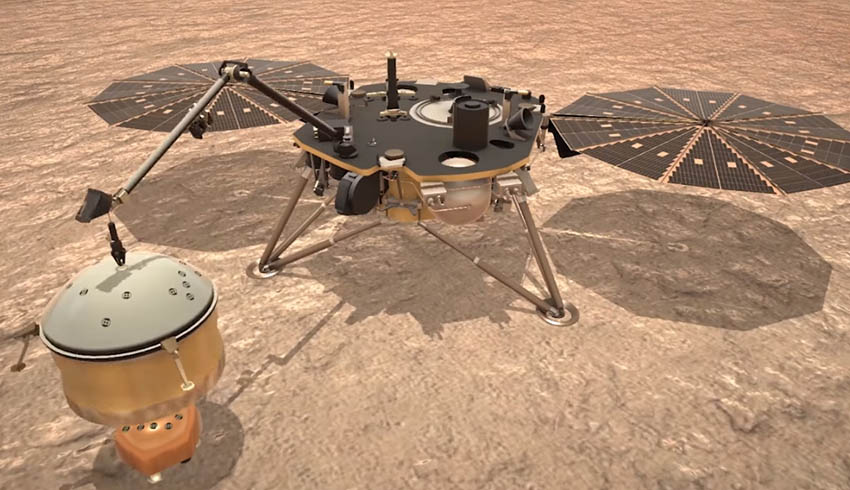
During its first full day on Mars, the lander generated more electrical power through its solar panels in one day than any previous vehicle has.
"It is great to get our first 'off-world record' on our very first full day on Mars," said Tom Hoffman, InSight project manager at NASA's Jet Propulsion Laboratory.
"But even better than the achievement of generating more electricity than any mission before us is what it represents for performing our upcoming engineering tasks."
The lander produced 4,588 watt-hours during sol 1 (solar Mars day), which means InSight has "more than enough" power to follow through on its mission.
The previous record was held by NASA's Curiosity rover, which generated 2,806 watt hours.
InSight has twin solar arrays that are 2.2 metres wide, which were deployed shortly after landing on the Red Planet.
So far, NASA has been trying to learn about InSight's landing site; a lava plain named Elysium Planitia. Preliminary photos have shown the vehicle sits titled in shallow impact crater.
"The science team had been hoping to land in a sandy area with few rocks since we chose the landing site, so we couldn't be happier," said Hoffman.
"There are no landing pads or runways on Mars, so coming down in an area that is basically a large sandbox without any large rocks should make instrument deployment easier and provide a great place for our mole to start burrowing."
The InSight team expects to take higher quality photos in the coming days when the lander releases its dust covers that keep the optics of the craft's cameras safe during landing.
Receive the latest developments and updates on Australia’s space industry direct to your inbox. Subscribe today to Space Connect here.












